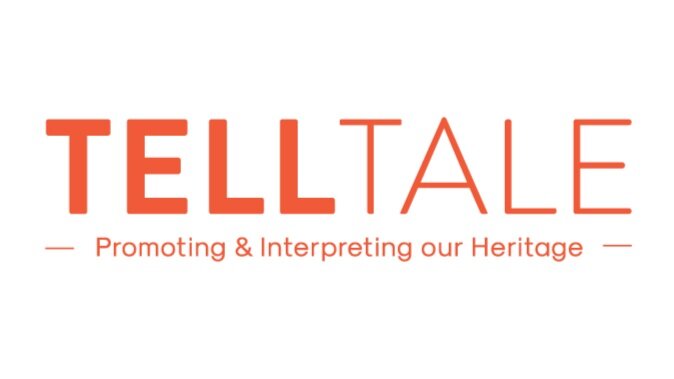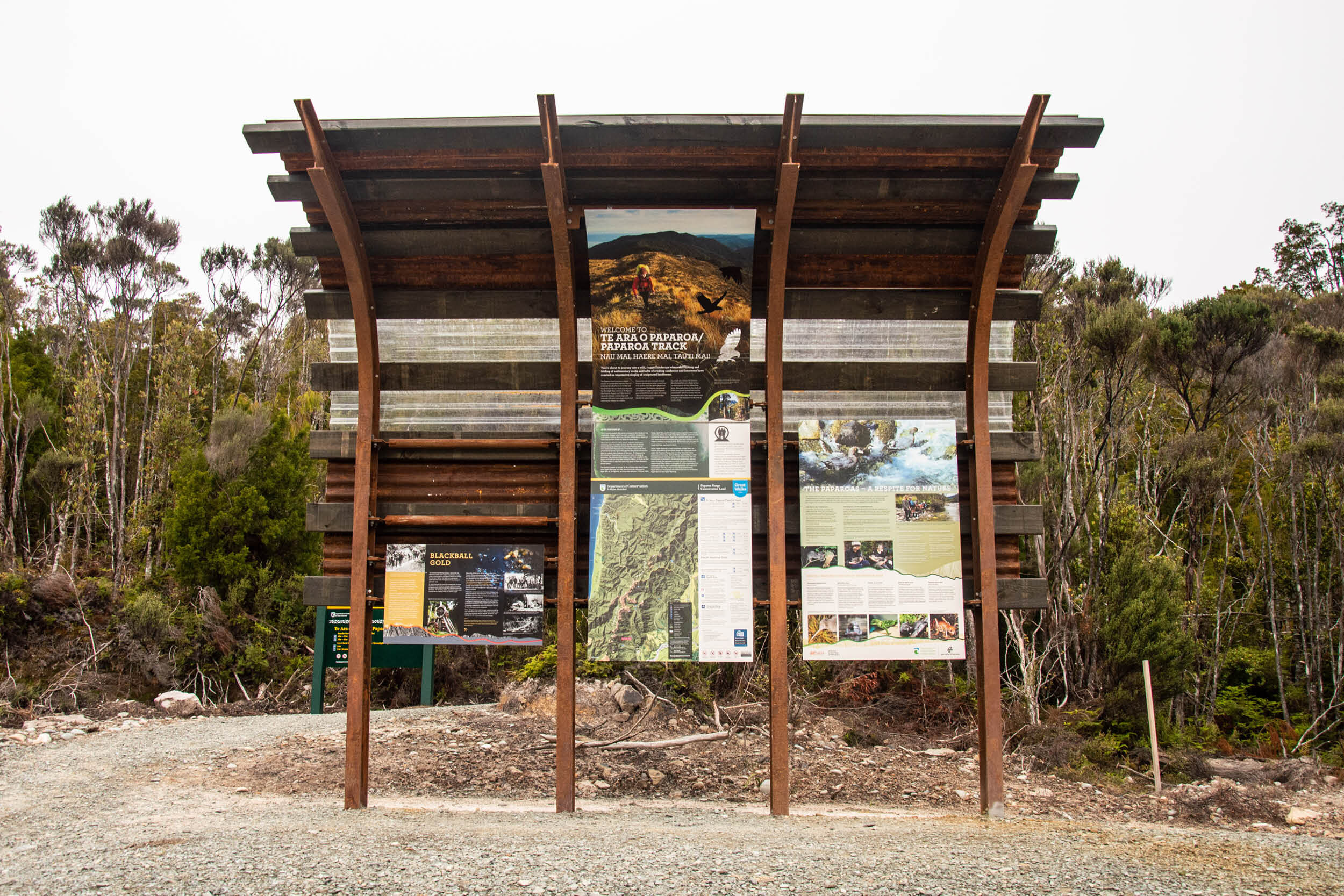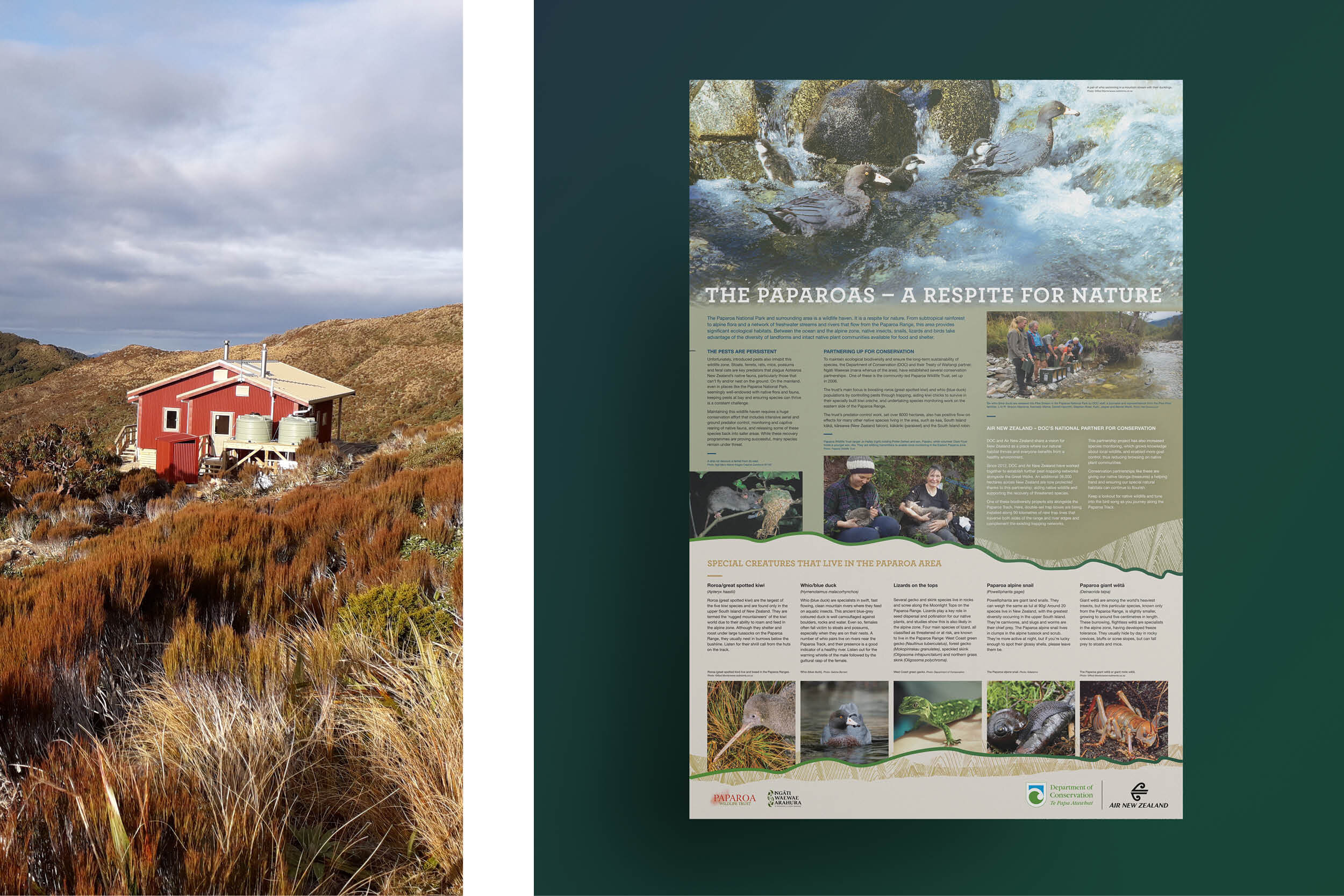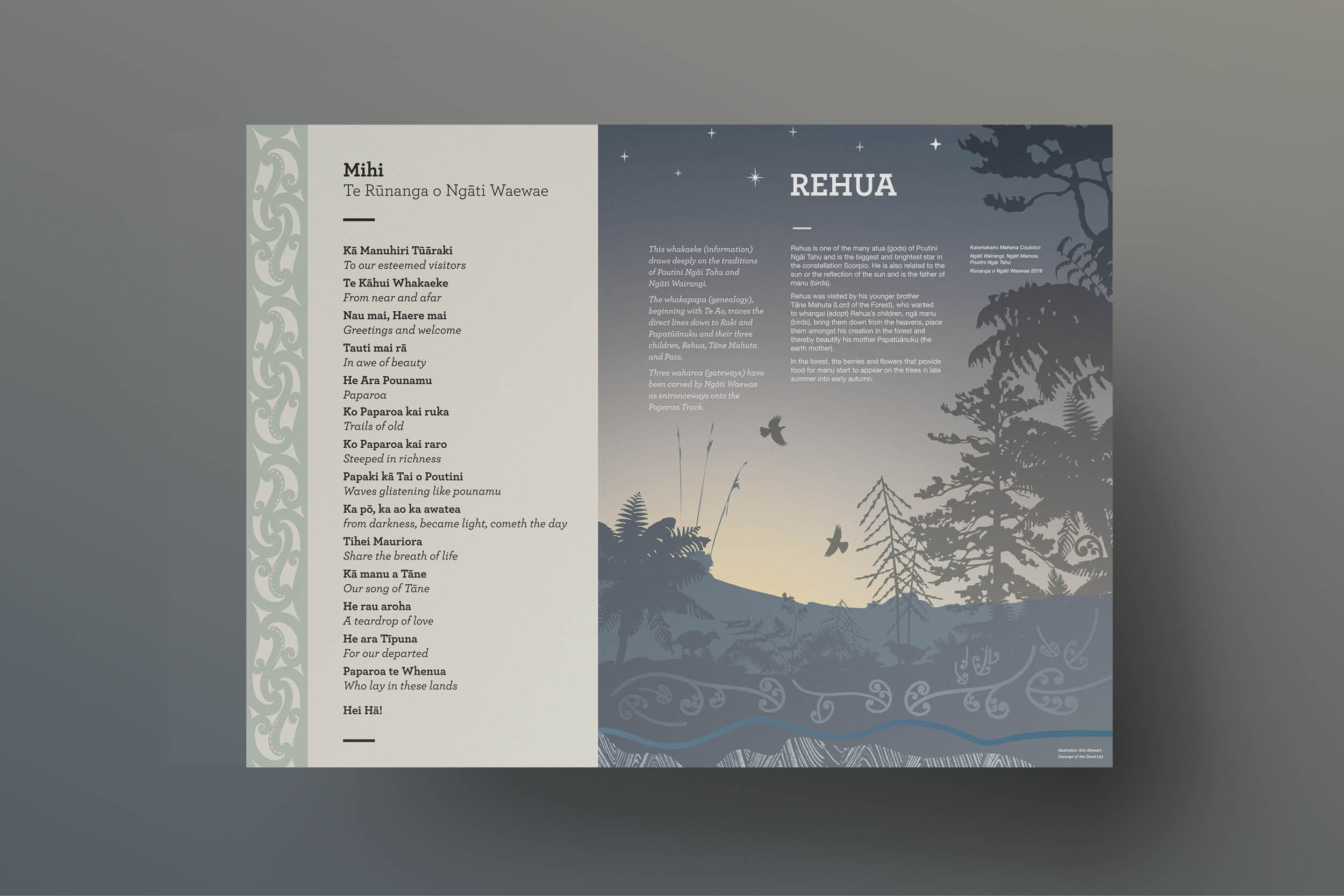Te Ara o Paparoa
WEST COAST
Client:
Department of Conservation, West Coast
Date of Project: 2019/20
Graphic Design: Goanna Design
Objective:
Create an engaging interpretive journey across the country’s newest Great Walk/cycle ride (55 kms). Orientate visitors to the track and its natural and cultural heritage at three key entrance points and provide interpretive stories in the huts en route in relation to the immediate landscape being experienced.
Process:
An interpretation concept plan created in 2018 guided the process. Telltale was part of a team of consultants who ran a number of workshops in 2018 with Ngati waewae, the Pike River family’s representatives and DOC to produce concepts for the Paparoa Track and proposed Pike Visitor Centre Interpretation. The Paparoa Track interpretation concept plan was developed providing some guidance and the content and design was prepared and implemented by Telltale and Goanna Design in liaison with DOC and stakeholders during 2019.
Production:
The concept of using half round steel ‘mine sets’ with linkage to the area’s mining heritage had been presented as an option during the consultation process and architects, Sheppard and Rout (Christchurch), designed these industrial style entrance structures to house the three track entrance interpretation components (6 at each). Each track entrance included orientation/ information, cultural and historical stories and images that matched that section of track, including biodiversity messages and visuals. Three different waharoa (gateways) were designed by Ngati waewae at the various track entrances and these were interpreted in the steel shelters. Curved steel panels were inset into the rustic shelters complete with cut out kea silhouettes and large colourful enticing visuals.
Other interpretive components on the track include; a series of hut panels focusing on geology and the location of coal seams with reference to the Pike Coalfield, the Poutini Waitaiki Pounamu story, and the building of the Paparoa Track. Historic reference to early track building is presented at a couple of points en route via shaped steel bollards supported by aged jarrah posts. These identify and showcase early and recent cobblestone methods of track building based on historic pack tracks that are prevalent in the area.




